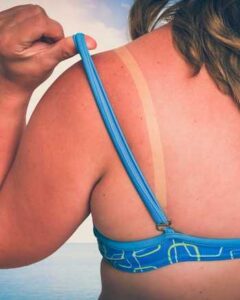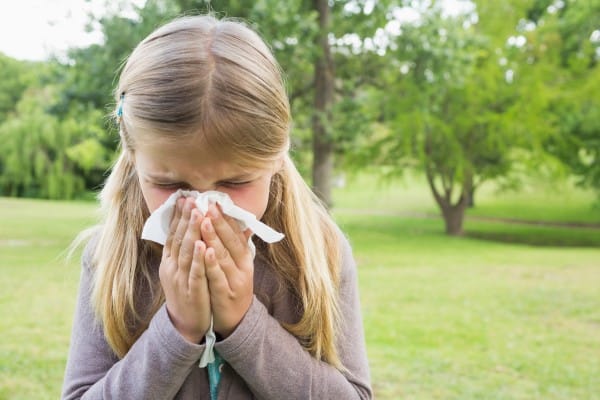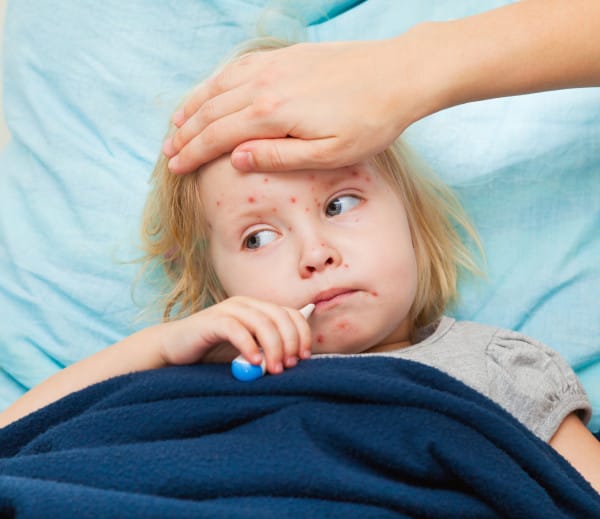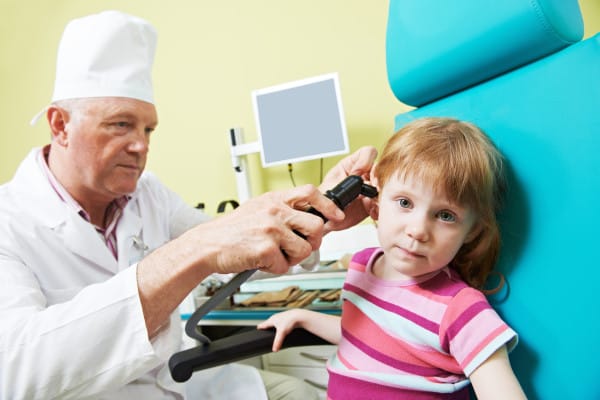Summer is here and it’s time for fun in the sun! Healthy sun exposure is important for mood, circadian rhythm, immune strength, and stress management.
Unfortunately, too much sun can lead to the familiar and often painful signs of sunburn. To heal sunburns quickly and naturally, we need to support the skin from the inside and from the outside.
What Is A Sunburn? 
Sunburns are inflammatory skin damage caused by radiation from the sun’s UV rays. The sun can cause first or second degree burns resulting in red, painful, and sometimes blistered skin.
First Degree Sunburns
Most sunburns are first degree burns. First degree burns only affect the outer layer of the skin, the epidermis. Symptoms of a first degree burn are dry, red skin and mild to moderate pain. The outermost layer of skin may peel off, but there is no blistering.
Second Degree Sunburns
Sometimes sunburns can cause second degree burns. In these cases, the burn extends from the epidermis to the underlying layer of skin called the dermis. Symptoms of a second degree sunburn are similar to first degree sunburns but with more intense pain and the possible presence of blisters. It’s important not to pick at or pop blisters; they are there to help the skin heal.
If the majority of skin is severely burned and begins to blister, it is time to consult a doctor. Also, consult a doctor if pain is severe; if burn is accompanied by headache, nausea, or chills; or if the burn doesn’t start to resolve or worsens with home treatment.
How To Treat A Sunburn
Initial treatment of a sunburn involves cooling the skin to stop further damage from happening while making sure to increase hydration and electrolyte consumption.
The second part of sunburn treatment involves skin hydration, reduction of inflammation, supplemental nutrients to repair skin, and pain management. Sunburned skin needs to be protected from the sun until it is healed.
When sunburn happens, it’s also important to look out for related issues like dehydration, electrolyte imbalance, and heat-related illnesses, such as heat cramps, heat exhaustion, and heat stroke.
Cooling The Skin After Sun Exposure
After being out in the sun, it’s smart to cool down the skin even if there are no signs of sunburn present. Sunburn can take up to 4 hours to start to show up and can continue to develop for the next 24-48 hours. My top choice for cooling the skin is refrigerated aloe gel. Cool showers and tepid baths can also help.
Adequate Hydration & Electrolytes
Sunburn increases the risk for dehydration. Signs of dehydration include fatigue, headache, and nausea. Check out this article for more signs of dehydration and how to address it: Signs of Dehydration & Homemade Electrolyte Drink Recipe – Dr. Green Mom
Skin Soothing Hydration
Once the skin is cool, skin soothing hydration is important. For mild first degree sunburns this is often all that is required. I prefer lotions or creams with skin healing herbal extracts: chickweed, plantain, milky oats, calendula, chamomile, lavender, green tea, witch hazel, and geranium. For optimal skin hydration, cream or lotion should be applied after a cool shower while the skin is still damp.
Honey and/or yogurt are two additional soothing remedies that can be applied to sunburn. Honey is particularly useful for blistered skin. These are pretty messy treatments, so when I’m using them, it is generally right before a bath or even in the bathtub.
Soothing tepid baths can be helpful as well. Any of the above herbs can be steeped in water and added to a bath. Milk, apple cider vinegar, baking soda, and cornstarch are all soothing and cooling remedies that are often added to baths to help soothe sunburned skin.
Read more about healing baths here: How to Use Oatmeal Baths for Soothing Itchy Skin – Dr. Green Mom and How to Safely Prepare an Epsom Salt Bath With Essential Oils – Dr. Green Mom.
Reduction Of Inflammation
For more painful burns, managing inflammation is important. The herbs listed above are helpful in reducing skin inflammation and promoting healing; however, my secret weapon in reducing pain, swelling, and redness is an herb called Arnica montana. Arnica can be found infused into oil and in creams, balms, and ointments. Arnica is also available as a homeopathic remedy.
If arnica-infused oil isn’t available, I will often reach for olive oil as a substitute. Oleic acid, one of the components of olive oil, is an anti-inflammatory that is useful when applied to sunburned skin. While olive oil doesn’t have the pain-relieving properties of arnica, it is still helpful for reducing inflammation and promoting healing.
In addition to reducing inflammation externally with arnica oil or olive oil, I use omega 3 fatty acids to reduce inflammation from the inside. Research shows that supplementing with omega 3s can help reduce sunburns and sun damage and can speed healing after sunburns occur.
Note: Conventional wisdom says not to use oil or heavy cream on a sunburn. This is true when heat is still present in the skin because it can interfere with sweating and lead to heat rash. If you’re using oils to promote healing, be sure to wait until the skin is cool first.
Nutrients For Skin Repair & Protection
Optimal nutrition is important for skin repair after a sunburn and for future protection from UV rays. A well-balanced diet, featuring brightly colored fruits and vegetables, will provide plenty of protective polyphenols. Other important nutrients include omega 3 fatty acids, vitamin A, vitamin C, vitamin D, vitamin E, and zinc.
Pain Management
Topical application of arnica-infused oil combined with homeopathic arnica is my go-to combination for sunburn pain relief. Arnica-infused oil can be applied up to every 1-2 hours to soothe the skin. Homeopathic arnica comes in pellet form and can be consumed as needed for pain. Because of the highly diluted nature of homeopathic remedies, they are quite safe and don’t interact with any other medications.
Sometimes arnica isn’t accessible or doesn’t provide enough pain relief. In those cases, I reach for ibuprofen or acetaminophen. Pain relief after a sunburn is important, especially at bedtime because sleep is essential for healing.
Summary
Prevention is best, but sometimes despite our best efforts, sunburns happen. The first steps to treating a sunburn are to cool down the skin and ensure adequate hydration. The next steps support healing the skin and managing pain.
My remedies of choice for cooling the skin are aloe gel, cool showers, and tepid baths. For soothing the skin, I reach for herbal preparations with herbs like chickweed, plantain, oats, chamomile, and lavender. For healing blisters I use honey. For reducing inflammation I use olive oil and/or arnica oil topically and an omega 3 supplement internally. For skin repair, I increase omega 3 fatty acids, vitamin A, vitamin C, vitamin D, vitamin E, and zinc internally using either food or supplements. For pain management, I use arnica and/or ibuprofen or acetaminophen.
References:
da Silva Prade, J., Bálsamo, E. C., Machado, F. R., Poetini, M. R., Bortolotto, V. C., Araújo, S. M., Londero, L., Boeira, S. P., Sehn, C. P., de Gomes, M. G., Prigol, M., & Cattelan Souza, L. (2020). Anti-inflammatory effect of Arnica montana in a UVB radiation-induced skin-burn model in mice. Cutaneous and ocular toxicology, 39(2), 126–133. https://doi.org/10.1080/15569527.2020.1743998
Pegoraro, N. S., Camponogara, C., Gehrcke, M., Giuliani, L. M., da Silva, D. T., Maurer, L. H., Dias, P., Emanuelli, T., Cruz, L., & Oliveira, S. M. (2020). Oleic acid-containing semisolid dosage forms exhibit in vivo anti-inflammatory effect via glucocorticoid receptor in a UVB radiation-induced skin inflammation model. Inflammopharmacology, 28(3), 773–786. https://doi.org/10.1007/s10787-019-00675-5
Puvabanditsin, P., & Vongtongsri, R. (2005). Efficacy of aloe vera cream in prevention and treatment of sunburn and suntan. Journal of the Medical Association of Thailand = Chotmaihet thangphaet, 88 Suppl 4, S173–S176.
Saric, S., & Sivamani, R. K. (2016). Polyphenols and Sunburn. International journal of molecular sciences, 17(9), 1521. https://doi.org/10.3390/ijms17091521
Bernard, J. J., Gallo, R. L., & Krutmann, J. (2019). Photoimmunology: how ultraviolet radiation affects the immune system. Nature reviews. Immunology, 19(11), 688–701. https://doi.org/10.1038/s41577-019-0185-9
Sies, H., & Stahl, W. (2004). Nutritional protection against skin damage from sunlight. Annual review of nutrition, 24, 173–200. https://doi.org/10.1146/annurev.nutr.24.012003.132320
Mead MN. Benefits of sunlight: a bright spot for human health. Environ Health Perspect. 2008 Apr;116(4):A160-7. doi: 10.1289/ehp.116-a160. Erratum in: Environ Health Perspect. 2008 May;116(5):A197. PMID: 18414615; PMCID: PMC2290997.
Das, L. M., Binko, A. M., Traylor, Z. P., Peng, H., & Lu, K. Q. (2019). Vitamin D improves sunburns by increasing autophagy in M2 macrophages. Autophagy, 15(5), 813–826. https://doi.org/10.1080/15548627.2019.1569298
Meng, F., Qiu, J., Chen, H., Shi, X., Yin, M., Zhu, M., & Yang, G. (2021). Dietary supplementation with N-3 polyunsaturated fatty acid-enriched fish oil promotes wound healing after ultraviolet B-induced sunburn in mice. Food science & nutrition, 9(7), 3693–3700. https://doi.org/10.1002/fsn3.2330
Xuan, S. H., Park, Y. M., & Park, S. N. (2019). Antimelanogenic and Antimigration Properties of the Ethyl Acetate Fraction of Calendula officinalis Flowers on Melanoma Cells. Photochemistry and photobiology, 95(3), 860–866. https://doi.org/10.1111/php.13064
Givol, O., Kornhaber, R., Visentin, D., Cleary, M., Haik, J., & Harats, M. (2019). A systematic review of Calendula officinalis extract for wound healing. Wound repair and regeneration : official publication of the Wound Healing Society [and] the European Tissue Repair Society, 27(5), 548–561. https://doi.org/10.1111/wrr.12737
Reynertson, K. A., Garay, M., Nebus, J., Chon, S., Kaur, S., Mahmood, K., Kizoulis, M., & Southall, M. D. (2015). Anti-inflammatory activities of colloidal oatmeal (Avena sativa) contribute to the effectiveness of oats in treatment of itch associated with dry, irritated skin. Journal of drugs in dermatology : JDD, 14(1), 43–48.
Jarrahi M. (2008). An experimental study of the effects of Matricaria chamomilla extract on cutaneous burn wound healing in albino rats. Natural product research, 22(5), 422–427. https://doi.org/10.1080/14786410701591713







